Chickens can safely eat crab shells, as they are highly nutritious and rich in calcium. Feeding crab shells to chickens can provide additional nutrients and help strengthen their eggshells.
Crab shells can act as grit in the chicken’s gizzard, aiding in digestion. However, it is important to note that chickens should not be fed cooked crab shells, or any type of seafood shells, as they can pose a choking hazard and may not be easily digestible for the birds.
Overall, incorporating crab shells into a chicken’s diet can be beneficial, but care should be taken to ensure they are given in a safe and appropriate manner.
Table of Contents

Credit: www.etsy.com
Can Chickens Eat Crab Shells?
Chickens should not be fed crab shells, as they can pose a choking hazard and may not be easily digestible for them. It is best to provide chickens with appropriate shell grit to aid in their digestion.
Nutritional Benefits Of Crab Shells For Chickens
Crab shells can actually provide some nutritional benefits for chickens. They are rich in calcium, which is essential for strong eggshells and overall bone health in poultry. Crab shells contain chitin, a fibrous substance that can support healthy digestion in chickens by aiding the breakdown of food in their gizzard.
Feeding Tips For Chickens
When feeding chickens crab shells, it is important to take some precautions and follow a few feeding tips to ensure their safety and health. Firstly, it is recommended to crush the crab shells into smaller pieces to make them easier for chickens to consume. This will also minimize the risk of any sharp edges causing harm to their digestive tract.
Furthermore, it is important to provide crab shells as a supplement to a well-balanced diet. While they can be a source of calcium and other beneficial nutrients, they should not replace the main feed of chickens. Ensure that your chickens have access to nutritionally complete and balanced poultry feed to meet their overall dietary needs.
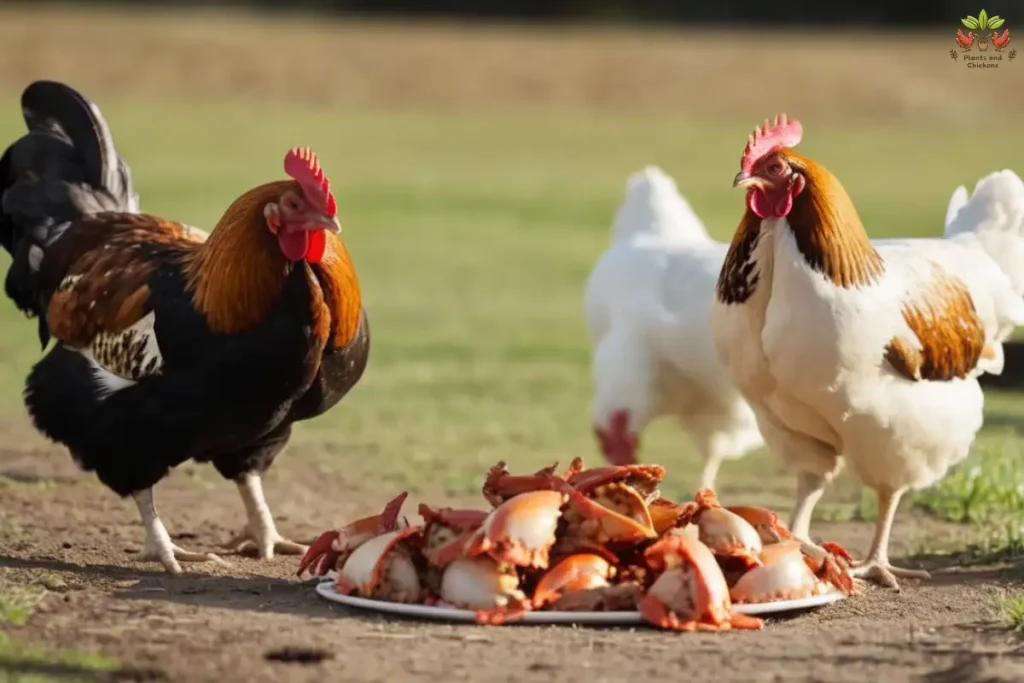
Potential Risks And Precautions
Although crab shells can offer nutritional benefits, there are some potential risks to consider when feeding them to chickens. As mentioned earlier, the sharp edges of crab shells can pose a choking hazard if they are not properly crushed. Therefore, it is crucial to always crush the shells into smaller pieces before offering them to your chickens.
While chickens can handle small amounts of cooked meat or fish as a protein source, caution should be exercised when it comes to offering cooked crab shells. The shells can be tough and may not be easily digestible for chickens, which can lead to digestive issues. It is best to avoid feeding chickens cooked crab shells altogether to prevent any potential problems.
In conclusion, while chickens can eat crab shells and benefit from the calcium and chitin they provide, it is important to take precautions and follow feeding tips to ensure their safety and health. Always crush the shells into smaller pieces and provide them as a supplement to a well-balanced diet. By doing so, you can safely incorporate crab shells into your chickens’ nutrition regimen.
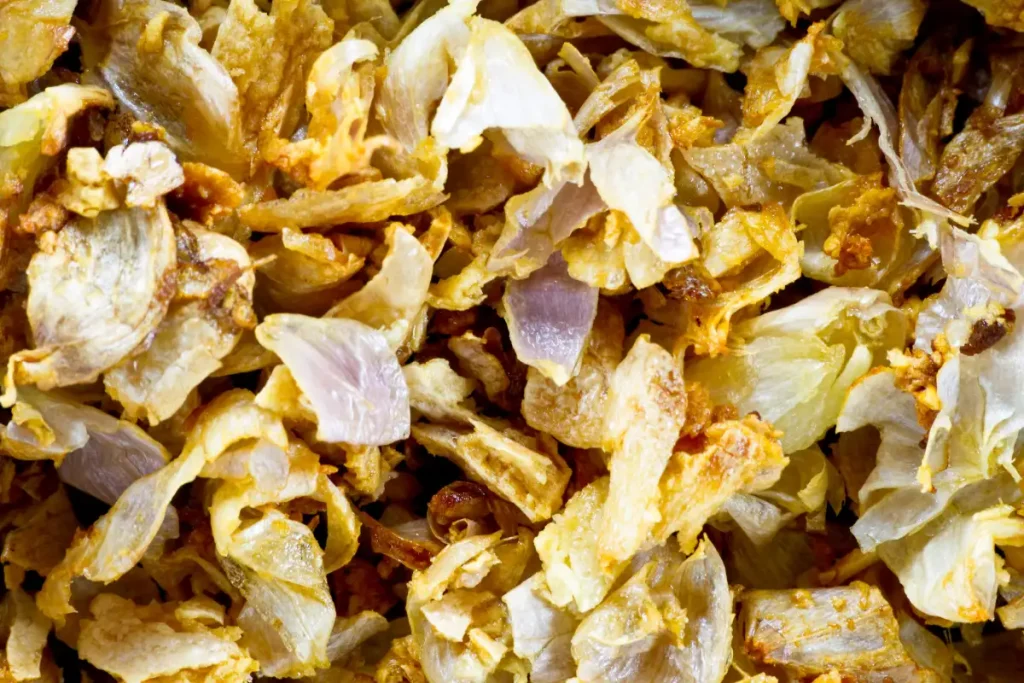
Can Other Animals Eat Crab Shells?
While chickens can safely consume crab shells, the question arises whether other animals can also indulge in this treat. Let’s explore the possibilities.
Can Dogs Eat Crab Shells?
Dogs, just like humans, should not consume crab shells. The sharp edges can cause harm to their mouth and intestines. The toughness of the shells makes them difficult to digest, which could lead to intestinal blockages.
Safety Considerations For Other Animals
The same safety concerns that apply to dogs also apply to other animals, such as cats and small pets. It’s best to avoid feeding them crab shells to prevent any potential harm. Instead, stick to their regular diet to ensure their health and well-being.
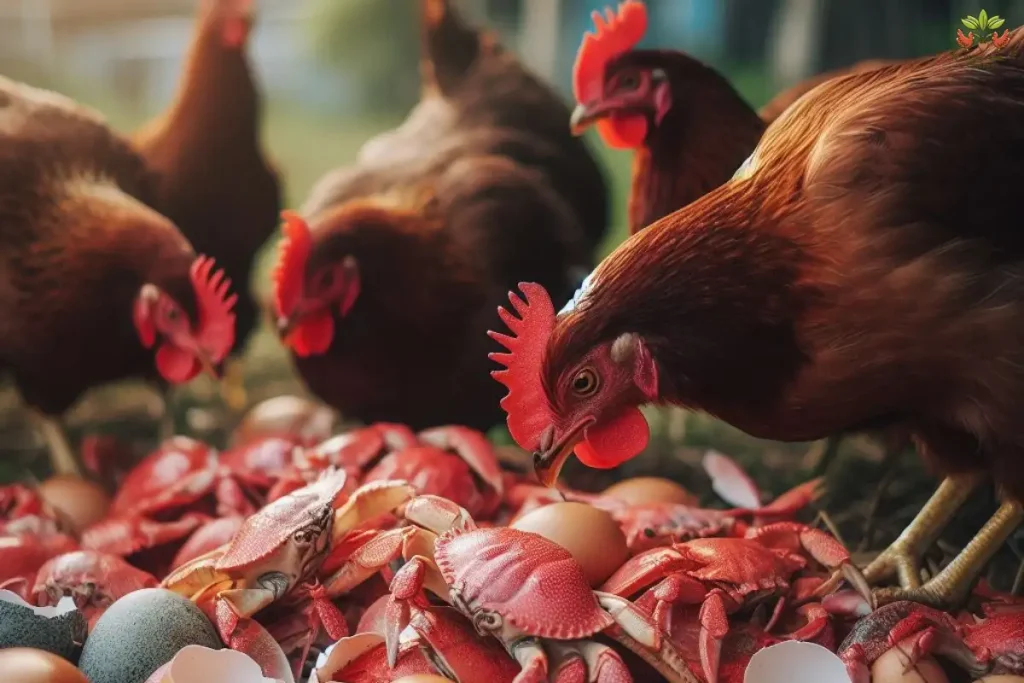
Eating Crab Shells As Humans
Chickens should not be fed cooked crab shells as they can pose a choking hazard and may not be easily digestible for them. While chickens are omnivores and can eat small amounts of cooked meat or fish as a source of protein, it is best to avoid feeding them crab shells.
Introduction: Eating Crab Shells As Humans
Crab shells are often thought of as waste material after cooking and consuming the succulent crab meat. However, did you know that crab shells can also be consumed by humans? Yes, you heard it right! Eating crab shells as humans is not only possible but can also provide a range of health benefits. In this article, we will explore the culinary uses and recipes for cooking and consuming crab shells.
Cooking And Consuming Crab Shells
Before diving into the recipes and culinary uses of crab shells, it’s important to understand how to properly cook and consume them. Follow these simple steps to make the most out of crab shells:
- Start by thoroughly cleaning the crab shells to remove any dirt or debris.
- Boil the crab shells in water for a few minutes to soften them.
- Once boiled, remove the shells from the water and let them cool.
- Crush or grind the shells into smaller pieces using a mortar and pestle or a food processor.
- The crushed crab shells can now be used in a variety of recipes and culinary creations.
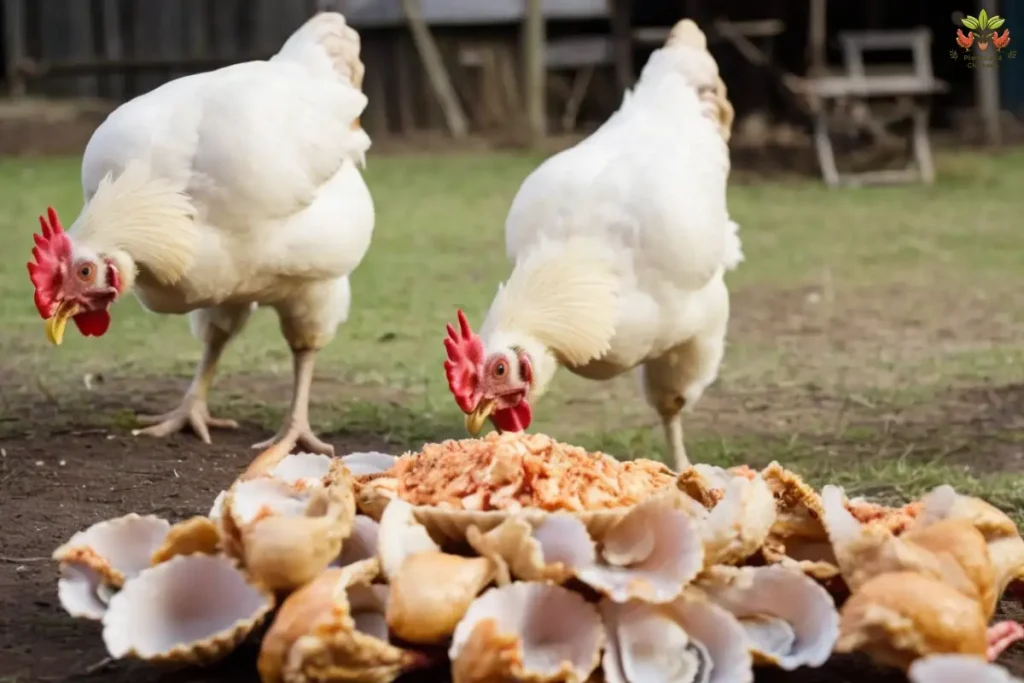
Recipes And Culinary Uses
Cooked crab shells can add a unique and flavorful twist to a variety of dishes. Here are some recipes and culinary uses to inspire your culinary adventures:
Crab Shell Soup
Simmer the crushed crab shells in a pot of vegetable or chicken broth. Add your favorite herbs and spices for additional flavor. This hearty and nutritious soup will surely impress your taste buds.
Crab Shell Seasoning
Mix crushed crab shells with salt, pepper, and other spices of your choice. This flavorful seasoning can be used to enhance the taste of grilled meats, vegetables, or even roasted potatoes.
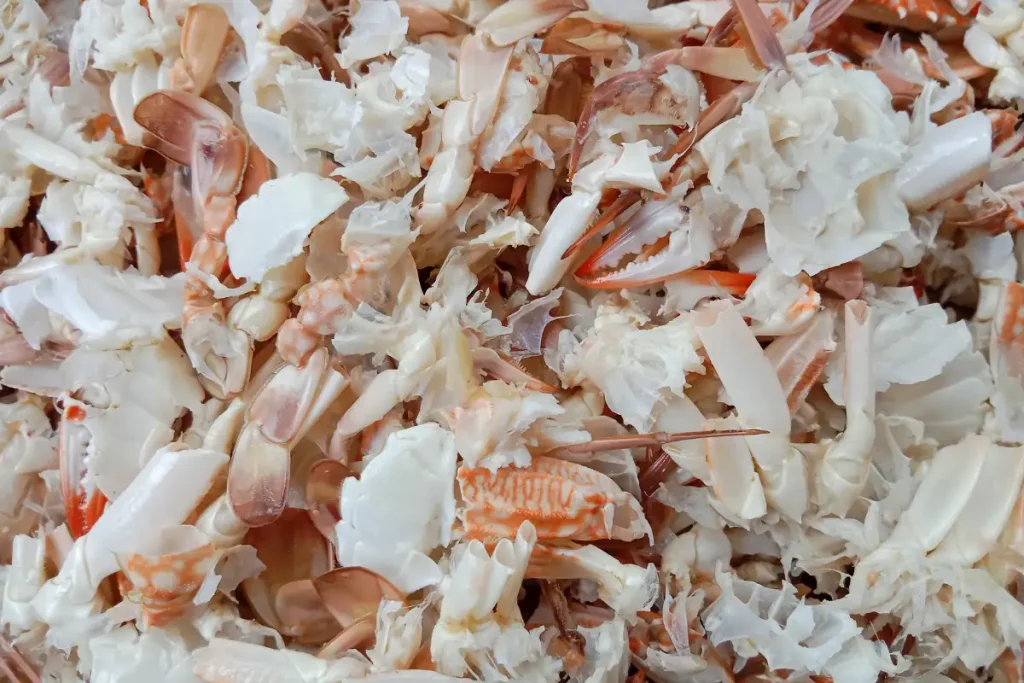
Crab Shell Crisps
Spread a thin layer of crushed crab shells on a baking sheet and bake in the oven until crispy. These crunchy crisps make for a delicious snack or a unique addition to a salad.
Crab Shell Powder
Grind the crushed crab shells into a fine powder and use it as a natural calcium supplement in your smoothies or sprinkle it over your morning oatmeal. This powder is rich in minerals and can boost your overall health.
So next time you’re enjoying a crab feast, don’t let the shells go to waste. Get creative in the kitchen and explore the culinary possibilities of eating crab shells as humans. From soups to seasonings, the options are endless!
Frequently Asked Questions Of Can Chickens Eat Crab Shells
Can Chickens Eat Sea Shells?
Yes, chickens can eat sea shells. Sea shells provide important nutrients like calcium to aid in their digestion. It is recommended to provide shell grit to even free-range chickens for enhanced digestion.
Can Chickens Eat Seafood?
Chickens can safely eat seafood, including fish, whether it’s raw or cooked, whole or chopped. However, it is not recommended to feed them crab shells as they can pose a choking hazard and may not be easily digestible for chickens.
Can You Eat Crab Shells?
Yes, you can eat crab shells. They can be fried, grilled, and sautéed easily at home, and they are safe to consume.
Can Animals Eat Crab Shells?
No, animals should not eat crab shells as they can be sharp and harmful to their mouths and intestines.
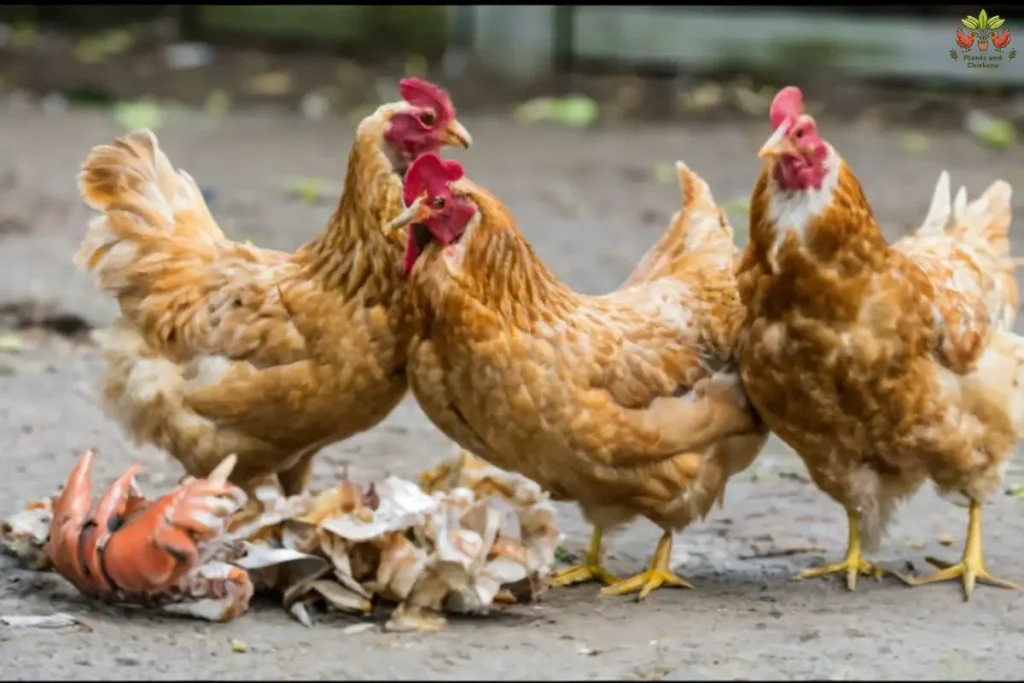
Conclusion
Chickens can eat crab shells and benefit from the calcium they provide. While crab shells are safe for chickens to consume, it’s important to note that they should not be fed cooked crab shells. These shells can pose a choking hazard and may not be easily digestible for chickens.
Therefore, it’s best to provide them with raw crab shells instead. By including crab shells in their diet, chickens can enjoy the nutritional advantages while maintaining their digestive health.

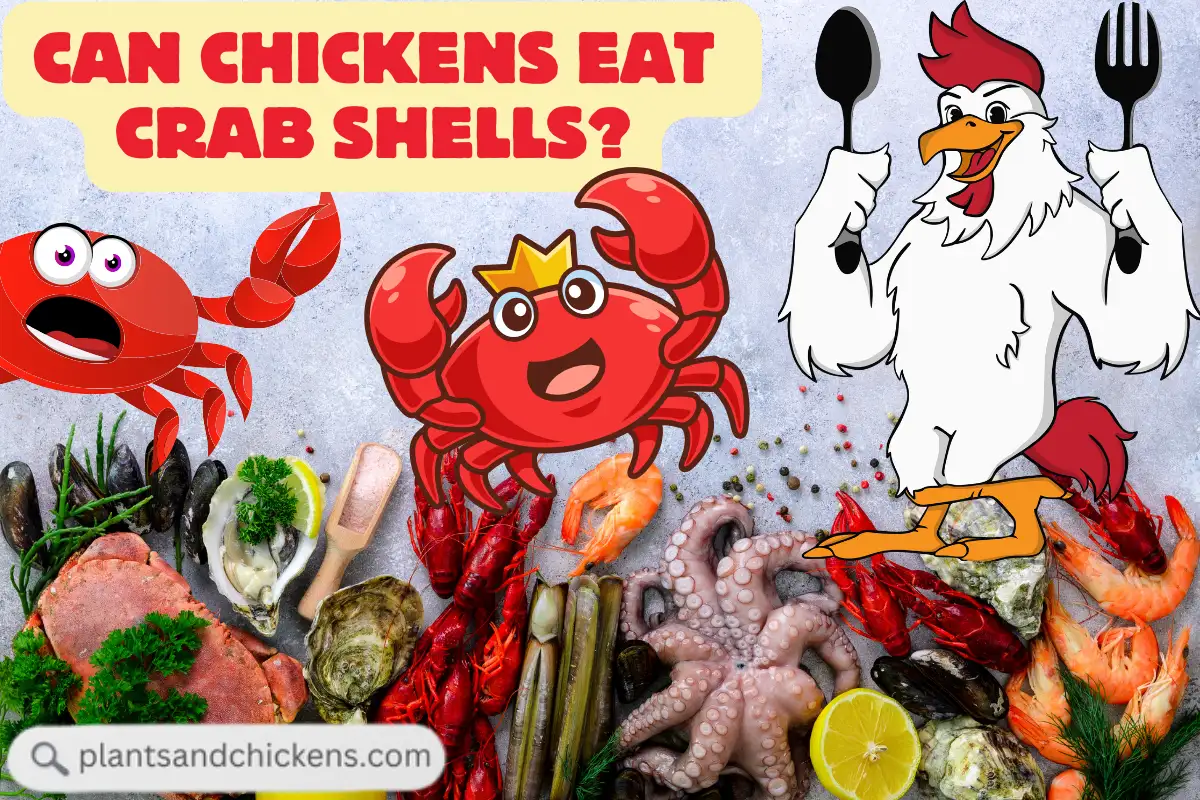
![Terrifying Trend: Why Do Roosters Chase Humans? [2024]](https://plantsandchickens.com/wp-content/uploads/2024/02/why-do-roosters-chase-humans-4.webp)


Leave a Reply